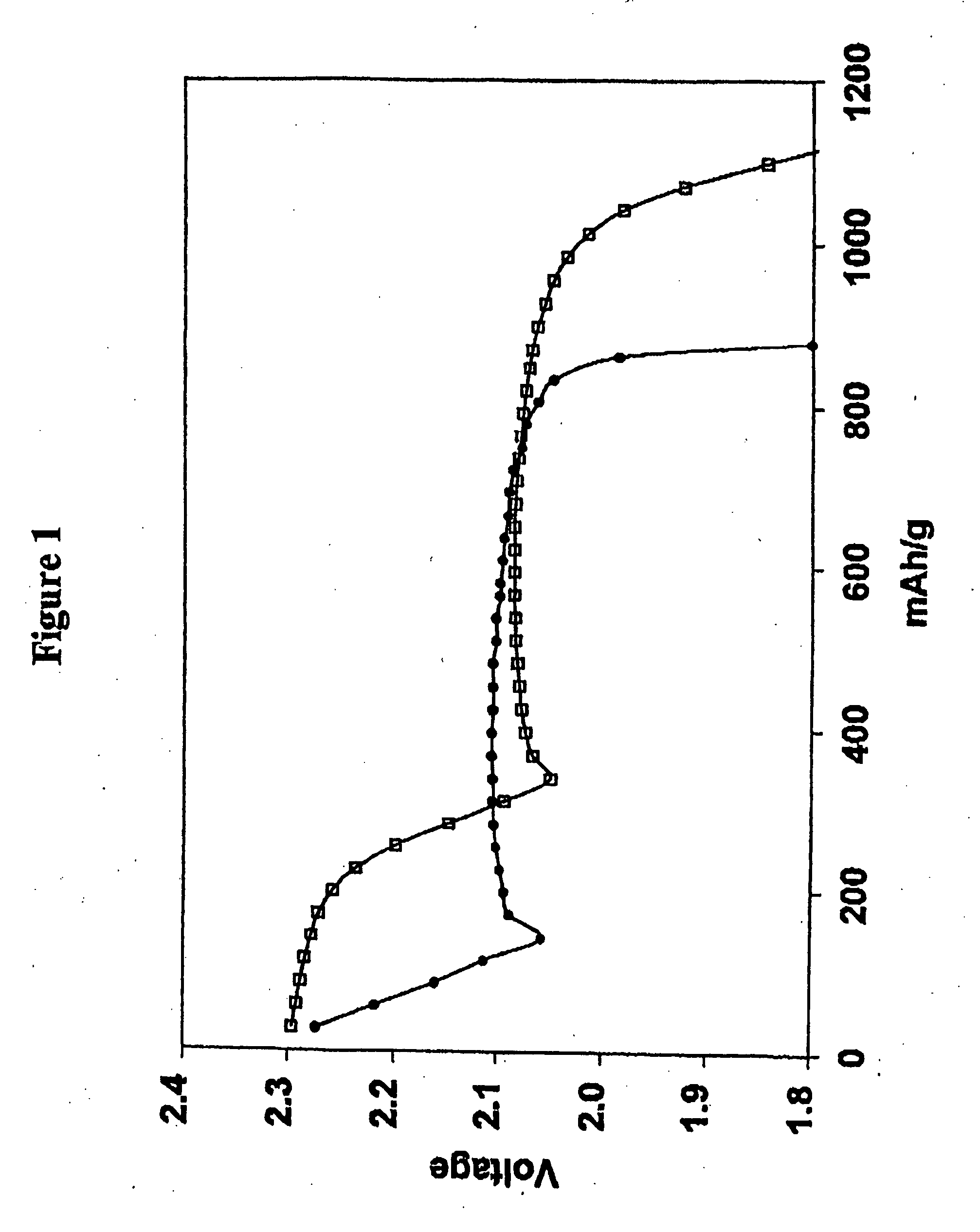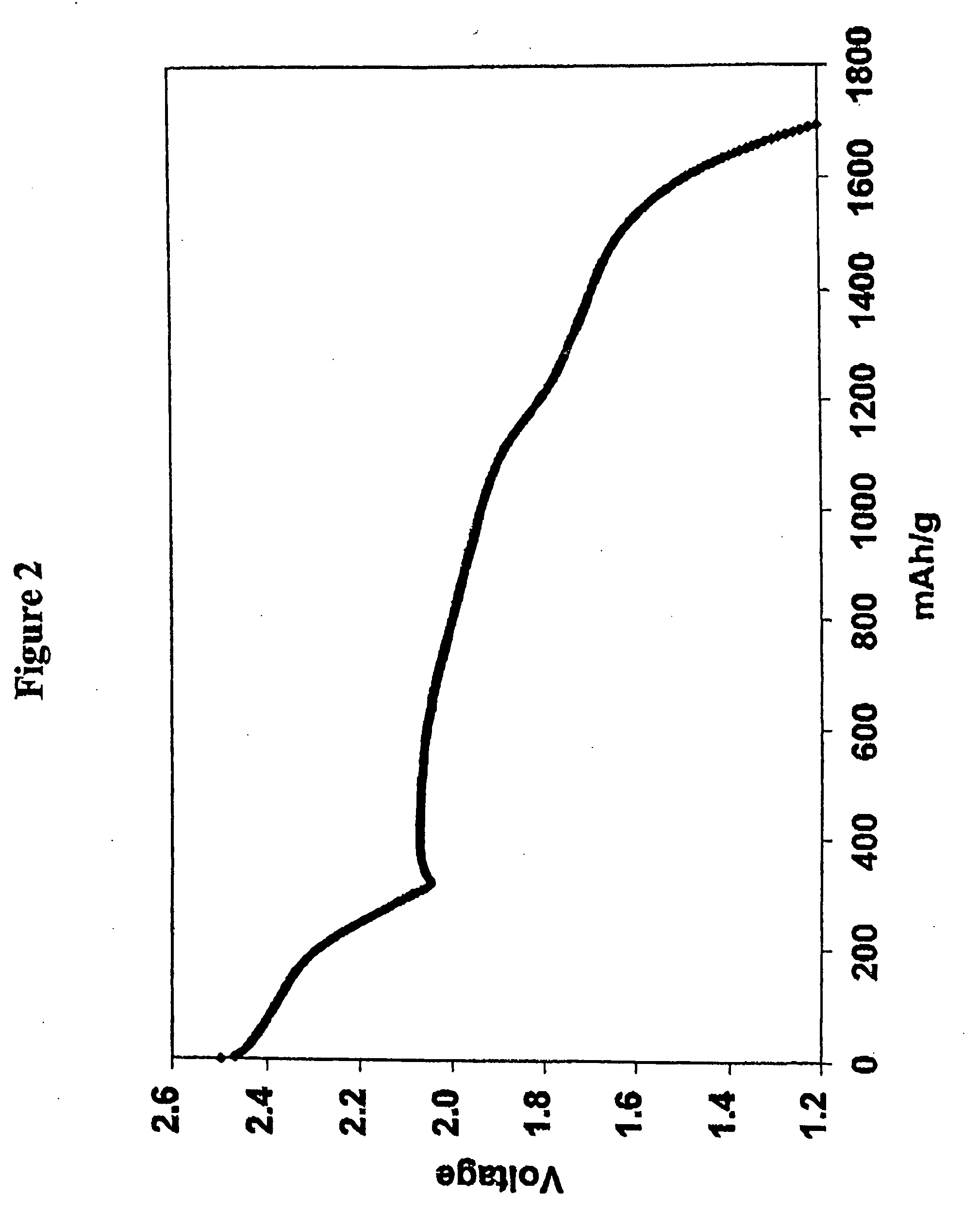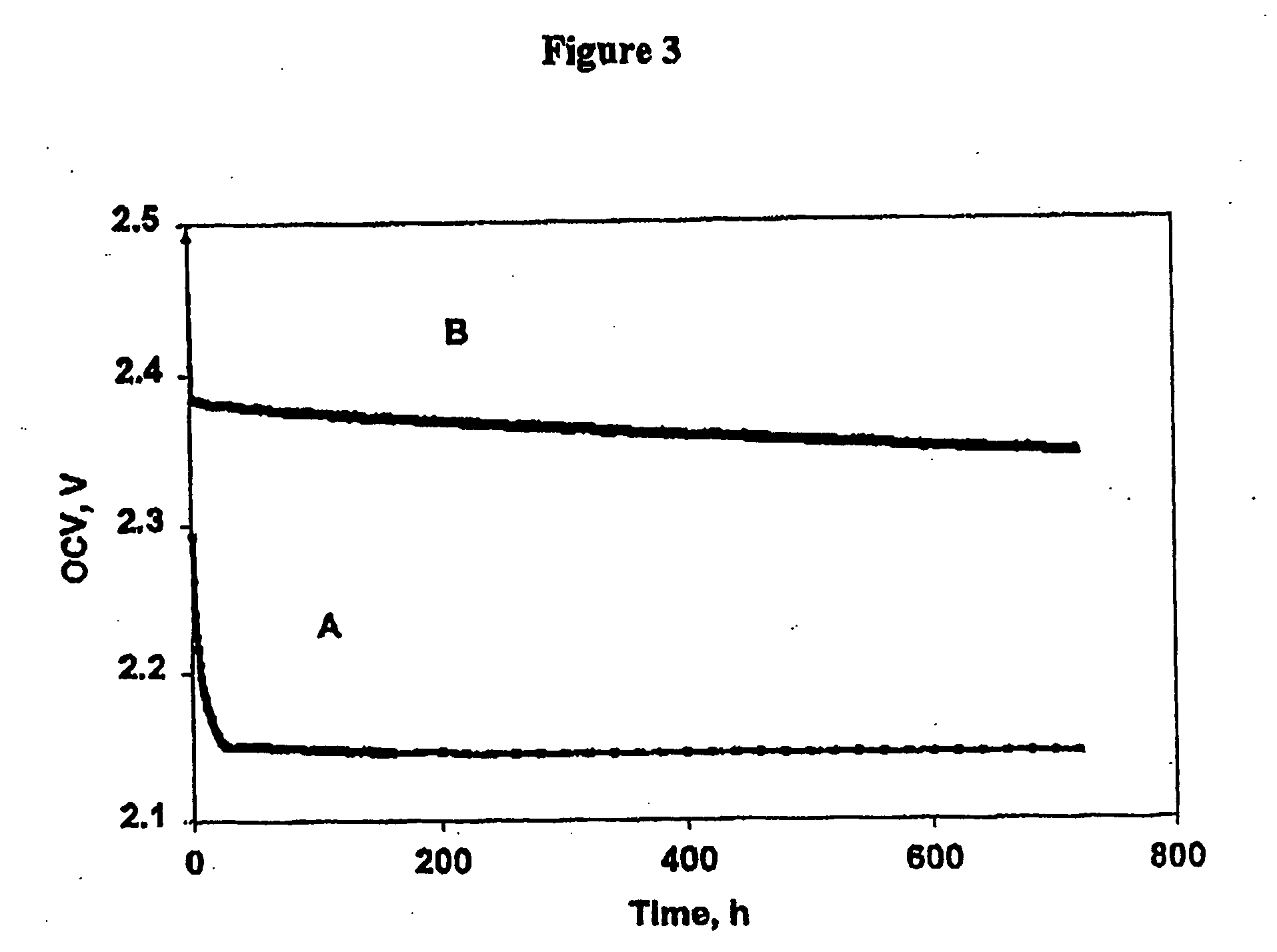Electrolytes for lithium sulfur cells
a lithium sulfur cell and electrochemical technology, applied in the field of electrochemical cells and batteries, can solve the problems of reducing the capacity of the cell, reducing the discharge voltage, and li/s cell sei formation is typically ineffective in preventing or minimizing lithium consuming reactions, and achieves low self-discharge rates, high cathode utilization rates, and high charge-discharge efficiencies.
- Summary
- Abstract
- Description
- Claims
- Application Information
AI Technical Summary
Benefits of technology
Problems solved by technology
Method used
Image
Examples
example 1
[0090] The electrolyte was that of Comparative Example 1 except that lithium nitrate at a concentration of 0.002 m was incorporated in the 0.5 m electrolyte solution of lithium imide in a 50 / 50 mixture of DOL and DME. In other words 0.002 moles of lithium nitrate (0.14 g) was added per Kg of the DOL / DME solvent (0.14 mg / g of solvent). Cycling of the cell was performed by the procedure of Comparative Example 1 with the results shown in Tables 2 and 3. Charge-discharge cycles were continued until the discharge capacity diminished to 900 mAh (874 mAh / g of sulfur; 52% utilization), which was 34 cycles and the accumulated capacity 33.7 Ah. 9 cycles were achieved before utilization fell below 60% (1005 mAh / g of sulfur).
example 2
[0091] The electrolyte was that of Comparative Example 1 except that lithium nitrate at a concentration of 0.1 m (6.9 mg / g of solvent) was incorporated in the 0.5 m electrolyte solution of lithium imide in a 50 / 50 mixture of DOL and DME. Cycling of the cell was performed by the procedure of Comparative Example 1 with the results shown in Tables 2 and 3. Charge-discharge cycles were continued until the discharge capacity diminished to 900 mAh (874 mAh / g of sulfur), which was 33 cycles and the accumulated capacity 37.1 Ah. 25 cycles were achieved before utilization fell below 60% (1005 mAh / g of sulfur).
example 3
[0092] The electrolyte was that of Comparative Example 1 except that lithium nitrate at a concentration of 0.2 m (13.8 mg / g of solvent) was incorporated in the 0.5 m electrolyte solution of lithium imide in a 50 / 50 mixture of DOL and DME. Cycling of the cell was performed by the procedure of Comparative Example 1 with the results shown in Tables 2 and 3. Charge-discharge cycles were continued until the discharge capacity diminished to 900 mAh (874 mAh / g of sulfur; 52% utilization), which was 46 cycles and the accumulated capacity 51.6 Ah. 39 cycles were achieved before utilization fell below 60% (1005 mAh / g of sulfur).
PUM
| Property | Measurement | Unit |
|---|---|---|
| charge-discharge efficiency | aaaaa | aaaaa |
| charge-discharge efficiency | aaaaa | aaaaa |
| charge-discharge efficiency | aaaaa | aaaaa |
Abstract
Description
Claims
Application Information
 Login to View More
Login to View More - R&D
- Intellectual Property
- Life Sciences
- Materials
- Tech Scout
- Unparalleled Data Quality
- Higher Quality Content
- 60% Fewer Hallucinations
Browse by: Latest US Patents, China's latest patents, Technical Efficacy Thesaurus, Application Domain, Technology Topic, Popular Technical Reports.
© 2025 PatSnap. All rights reserved.Legal|Privacy policy|Modern Slavery Act Transparency Statement|Sitemap|About US| Contact US: help@patsnap.com



